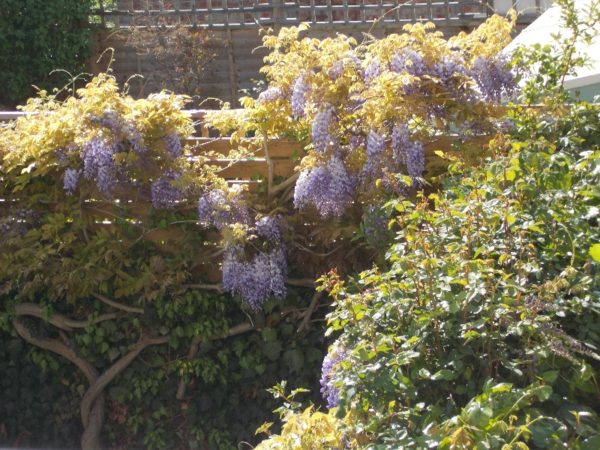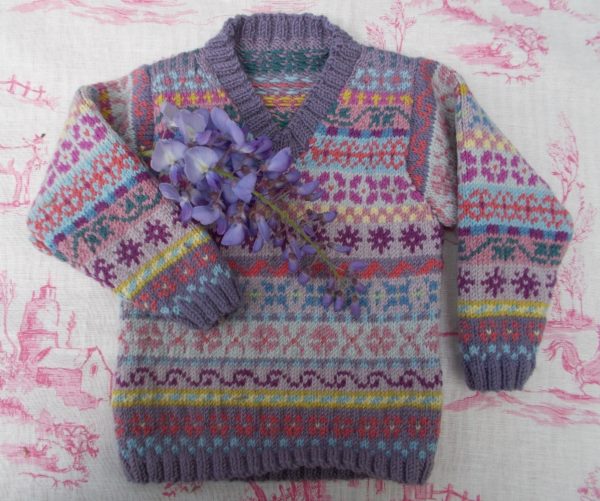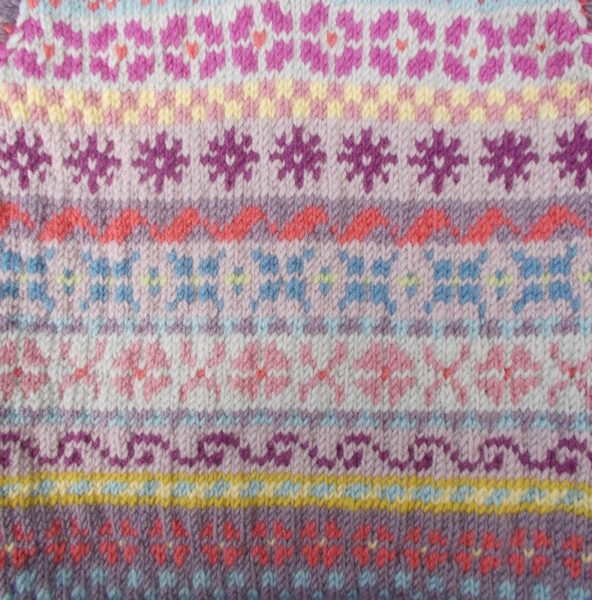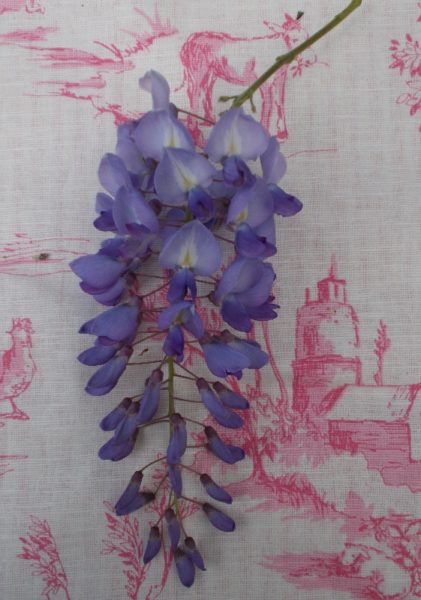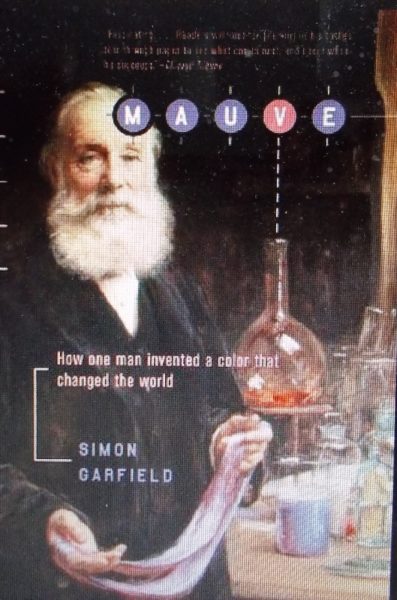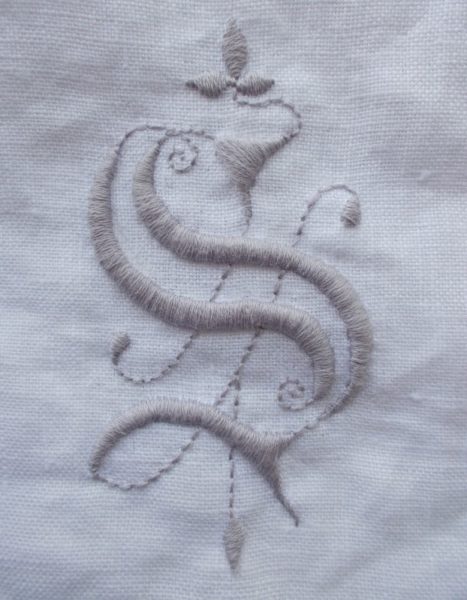
Fanciful initial S ( hand embroidered by Mary Addison)
A week in London busy with domesticity, childcare, and the joy of having three daughters together all in one place has left me a bit behind with my aim to blog once a week. I managed this little ‘S’ monogram but getting round to blogging about it was just a step too far. Forays into Islington (Ray Stitch, Loop, Camden Passage) and central London, along with a few lunches out kept us away from the newly turfed back garden as the grass settled in. On Saturday the grass had been down a month and the children were let loose on it. My grandson was ecstatic, rushing round self commentating on a game involving sticks, stones and leaves, much as hunter-gatherers might well have done millennia before. His little one-year old sister went for a more spiritual approach to nature as she sat – often alone – looking round in wonder at this new environment. A lunch party on Sunday with both adults and small people gave the lawn a real baptism of fire – and so far no bald patches.
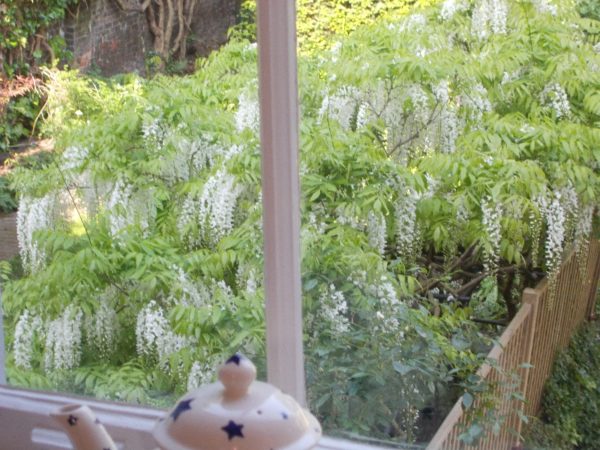
White wisteria in an Islington garden Mqy 2018
Daughter No 1 is just as lucky with neighbouring wisterias as we are, although the one that so generously hangs its flowers over her wall is white. (See below and http://www.addisonembroideryatthevicarage.co.uk/2017/06/07/white-wisteria-and-a-coat-for-summer-weddings/)
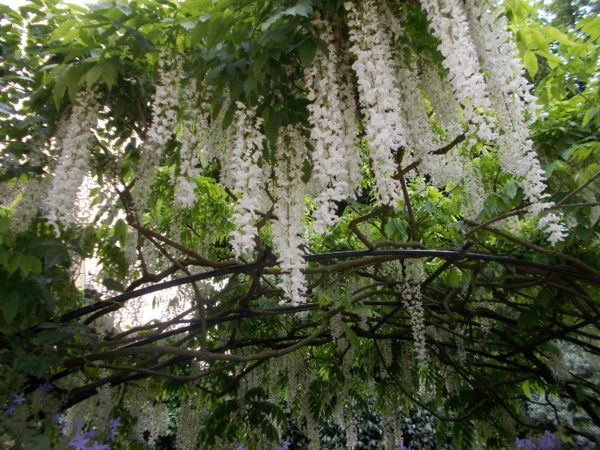
White wisteria in an Islington garden June 7 2017
But the highlight of the week end has been the hatching of five painted lady butterflies. By the time I saw them, the caterpillars were attached to a vertical circular disc from which they hung by silken threads (at the bottom of a mesh basket on a shelf in the house) – see photos below. Just before a butterfly emerges the chrysalides become darker, then suddenly lighter immediately before breaking out, at which point the wings look crumpled and to the inexperienced eye damaged. Catching this at it happens was utterly thrilling for both children and adults (who expected at least one failure) and caused great joy. At this stage the wings are gently shaken by the butterfly as blood is pushed into the vessels in the wings until they reach their full size. This takes a couple of hours.
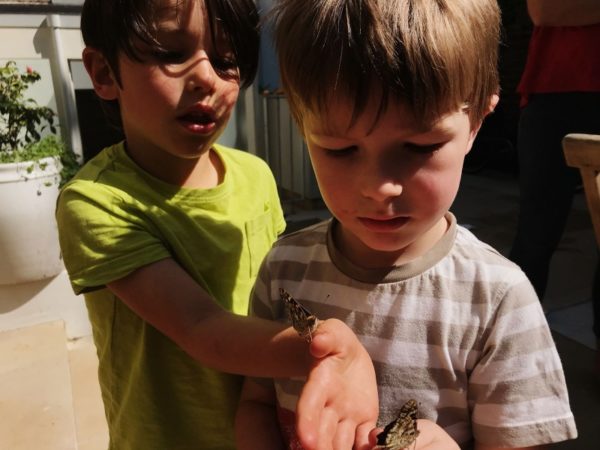
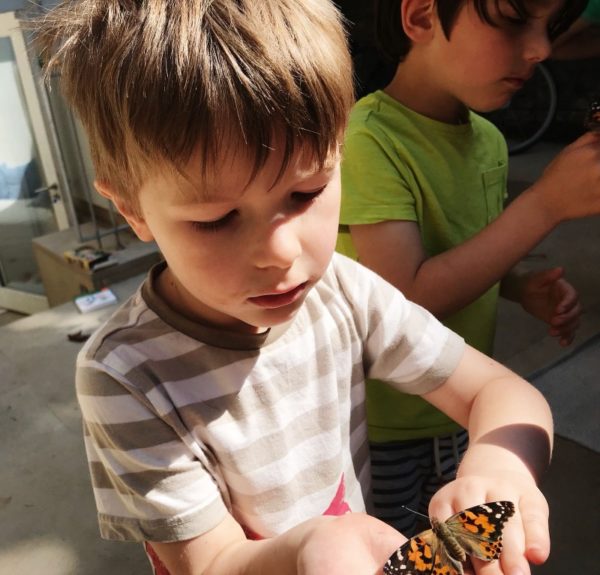
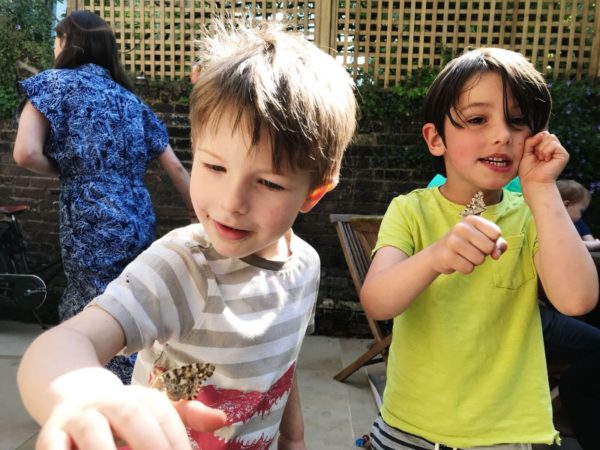
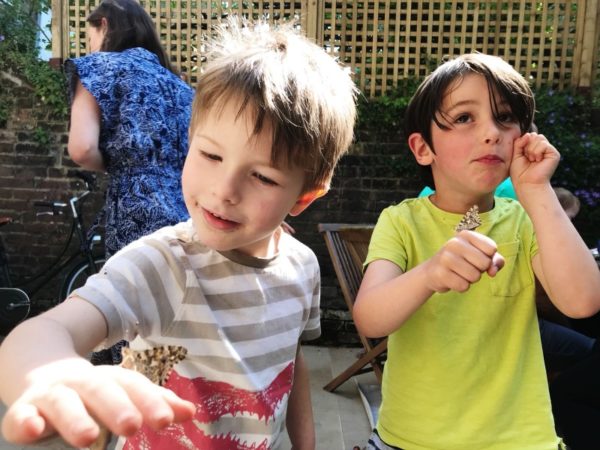
Three butterflies had hatched by Saturday evening and the last two emerged on Sunday morning, so we let the two four year olds release them after lunch. Three flew off immediately (one headed straight for the wisteria) but two (perhaps the last to emerge) didn’t go far and then came back and sat on the boys’ hands – one on each! And there they largely stayed for more than an hour or possibly two (briefly going and returning, like homing pigeons – one named ‘Stay-stay’ accordingly). We lost track of time, marvelling at the way they stood on their hands as they walked around the garden, finding patches of sun for the butterflies as the afternoon advanced. Eventually Daughter No 3 (biologist and conservation expert) returned these two butterflies to their basket, deciding to give them another day there before releasing them. Never have I seen butterflies so close up before, so what an experience for a four year old!
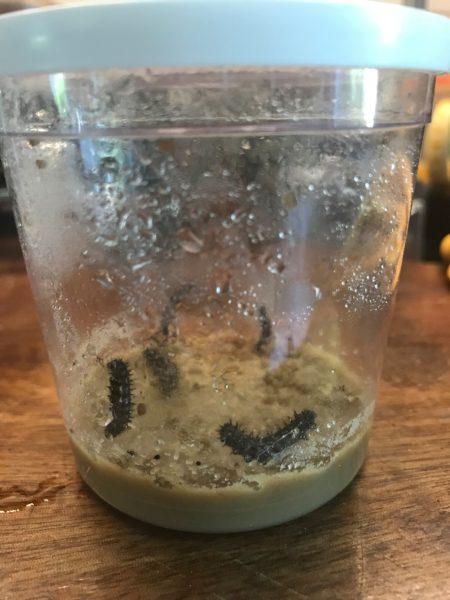
Painted Lady butterfly caterpillars
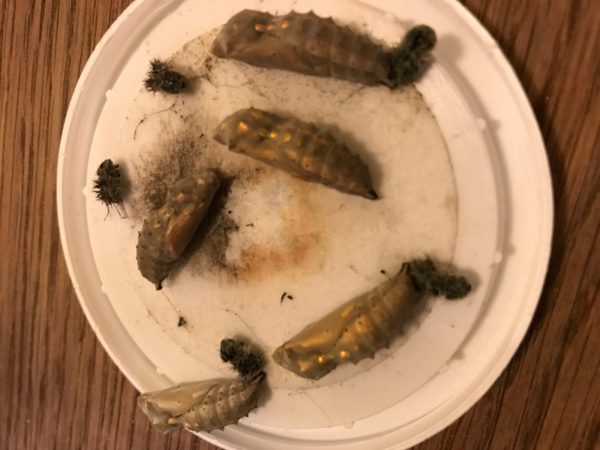
Painted lady chrysalides
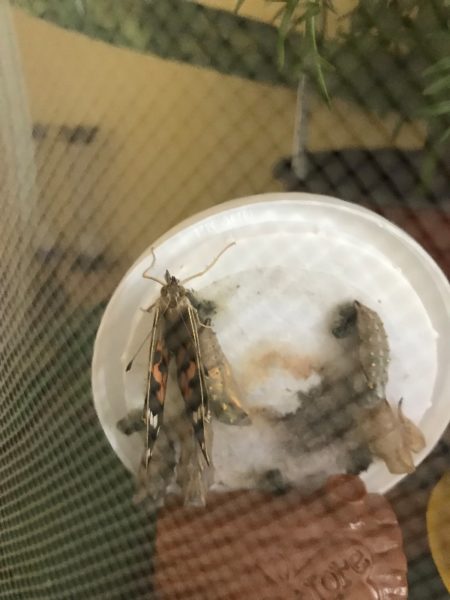
Painted Lady butterfly emerges from chyrsalis

